
William John Cohen was born on April 5th, 1891 to parents Abraham George Cohen and Alice Amelia nee Armstrong. William had two younger brothers Abraham and Joseph and three sisters Amelia, Ruby and Alice. His father Abraham died in 1902 at the age of 39, and his mother Amelia had the sole responsibility of raising the family.
His brothers Joseph and Abraham later became bootmakers. Meanwhile, William had taken on a very different trade, that of an axeman, a physically demanding trade that required skill and stamina. An axeman laboured hard felling giant trees, and often camped on-site for days or weeks and wherever the work would take him. This robust lifestyle would serve William well in the war years ahead.
His job may have even taken him as far as New South Wales as his enlistment was finalised at the Victoria Barracks in Paddington, Sydney on the 10th of September 1914, and he was now a Sapper with the 1st Field Company Engineers (1st FCE), regimental number 228.
Why William enlisted under the name of Davis remains a mystery and his mother Amelia, who was noted on his war record as his next of kin, forwarded a letter to the Base Records expressing her regret that he had used an alias. She also made a request to Base Records instructing them to not reveal any personal information requested by anyone, male or female other than herself. Amelia also declared how extremely proud she was of her son, ‘doing his duty for his King and Country’.

After two months of training in Sydney, on Sunday the 18th of October 1914, the men of the 1st Field Company Engineers were finally ready to embark on a seven-week voyage at sea. The drumbeat sounded – Reveille – at 5.00 and the 1st FCE broke camp at Moore Park and marched to the trams to take them to the wharf at Woolloomooloo Bay and then they were taken by Ferry to board the troopship A19 – Afric.
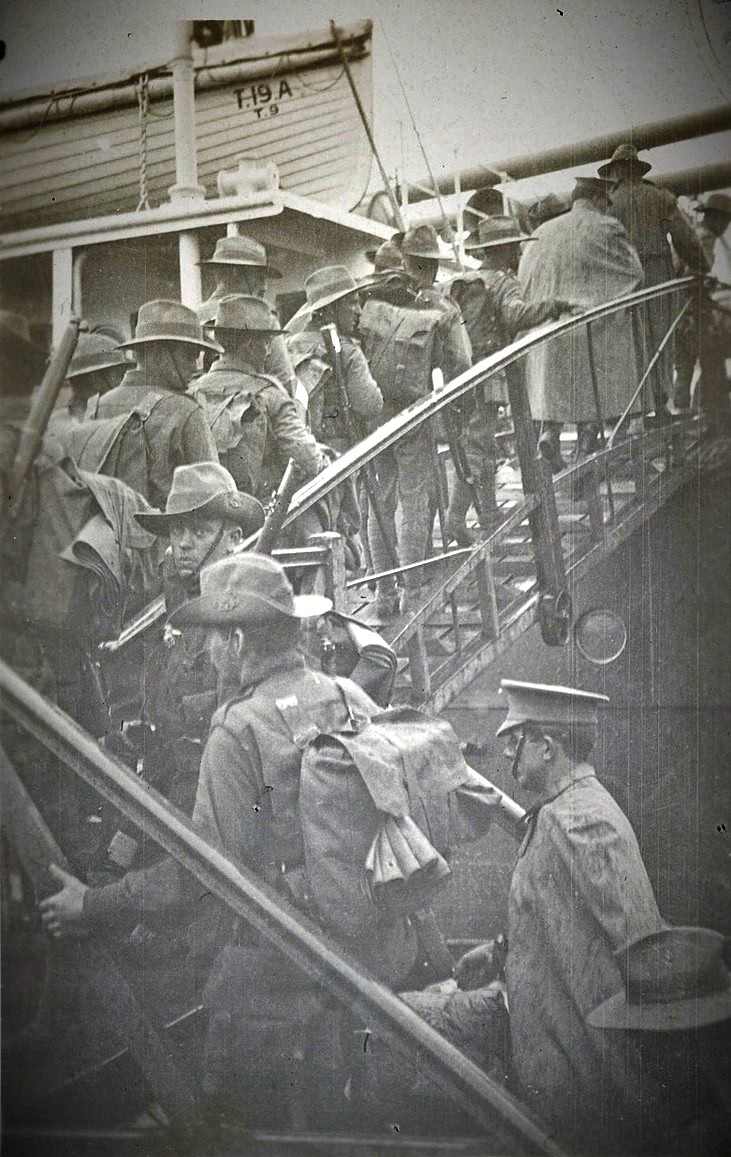
The 1st FCE “Short Account” shows the seven-week voyage on the ‘Afric’ finally arrived in Alexandria, Egypt on the 5th December 1914. Four days later, with the exception of No1. Section which stayed behind to look after the wagons and unload the horses, the 1st FCE was entrained at Alexandria at 8.00am for Mena Camp or “Camp Pyramids” arriving in the afternoon at 3.30.
In the following months the sappers of 1st FCE reinforcements merged with the original 1st FCE unit, boosting their number and continued training completely unaware of when or where they were headed. In February, Sapper 151 Ernest Murray gave his account of the sappers’ progress at Mena Camp.
“February has been a busy month with all branches of the Forces at Mena & elsewhere in Egypt. There has been all kinds of speculation & opinion as to where we would go & when. During the month the Engineers have been very busy training at Field work & during that time we have been supplied with Pontoons & have done a good deal of Bridging with them & have got on very well”. – February 1915 –from the Diary of 151Ernest Murray
On the 28th of Feb 1915 the men of the 1st FCE left Mena Camp and the mystery of the great Pyramids and entrained to Alexandria and on the 2nd March embarked on the troopships ‘Suffolk’ and ‘Devanha’ for Lemnos Island. 151 Ernest Murray recorded the following in his diary……
“2-3-15 About 8 am we steamed away from Port there was a fresh breeze blowing & a fairly choppy sea & a good many of the boys were sick……..
At our first Parade we were informed that our destination was Lemnos Island an Island about 40 miles from the Dardanelles. The breeze freshened during the day & there was a fair swell –
3-3-15 A very stiff breeze all day a fairly rough sea during the day one of our horses died – and we can ill afford to lose many of them. A lot of the boys are sick still. Things going well generally.
4-3-15 The morning broke clear with a very cool breeze blowing – many Islands being in sight – while on several mountains in the distance was to be seen snow. All day we drew closer to the snow covered mountains & the wind became very chilly. About 4 P.M. we entered the Harbor in Lemnos Island. The
harbor has a wide entrance to the ocean but hidden inside is a fine sheltered harbor where were lying at anchor several Battleships ships – Cruisers & Sub-marines beside supply ships. All around the harbor is gently rising country being mostly cultivated while there are a number of quaint villages, while a
striking feature are a great number of wind mills – apparently used as a primitive method of grinding the grain. The place gives one the impression of having been inhabited for many centuries as no doubt it has – the people no doubt living a very simple & primitive life. Taken in all it is a pretty place & interesting – but one thing that strikes the eye is the entire absence of trees. As we steamed in a number of recently large guns were to be seen on the foreshores.” – Courtesy Mitchell Library NSW
Over the following days, the 1st FCE disembarked, and they were soon engaged in erecting jetties, a signal hut, barracks, digging wells and laying water pipes. As the weeks passed the harbour became the major stage for the preparations for the Gallipoli assault.
The company spends the entire month at Lemnos, the work rate lifts and discipline is readily enforced as they are prepared for a landing but still unaware of the final destination. They build water wells and leading water supplies from the hills. They build what became known as the “Australian Pier” …… and the pontoon rafts for a landing stage. The heavy work rate continues into April and the tempo of preparations builds as the harbour fills with more battleships and Lemnos is crowded with troops from the empire.

Three days before the landing day at Gallipoli, it was confirmed that the men of the 1st FCE would be with the first landing party at Gallipoli. The men of the company started rehearsing landing operations in “pulling boats”, and building floating pontoons/ barrel piers on board the ‘Ionion.’
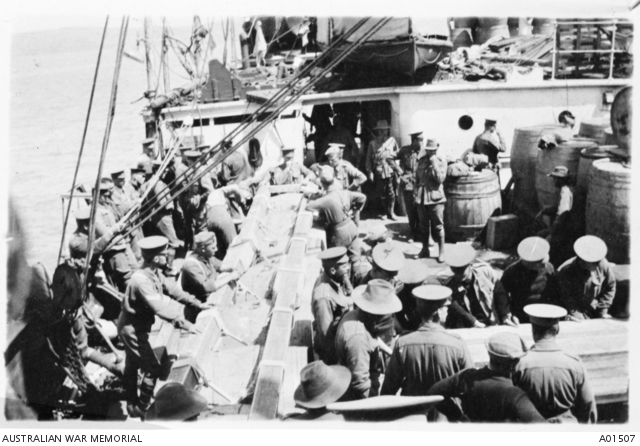
On the landing day, Gallipoli, 25th April, Lieut. Henry Bachtold and 10 Sappers which included William Davis Cohen and 1 Driver were on the transporter “Nizam” gathered on deck for a special task ahead. Days before the landing the Sappers had built what was described as rafts of barrel piers that could be joined together to form a jetty, and on landing day these were then to be towed to shore with the sappers and Lieut. Bachtold on board.
On landing day at approx. 2.00 pm having watched the dawn landing events unfold on the shores and within a mile off shore, a destroyer pulled alongside the ‘Nizam’ and the barrel rafts were detached from the “Nizam” and towed within 200 mtrs from shore. The brave men on board then lowered themselves onto the barrel rafts and had to row like mad, dodging heavy shrapnel fire all the way to shore managing to suffer only minor damage to the rafts.
Within fifteen minutes they had secured the barrel piers to the shoreline, the Army Medical Corp. (A.M.C) immediately put it to use and started transporting the wounded on barges back to the transport and hospital ships. Many of the wounded were transported back to the “Nizam”, the very vessel that had delivered them hope in the form of the jetty building sappers.
Once the party of men managed to get ashore, they continued building jetties day and night, all the time being uncomfortably close at hand to witness some gruesome scenes among the casualties. The sea at the water’s edge was red with blood as the empty stretchers that had carried the many wounded were washed and rinsed in the sea next to them.
All the while keeping their heads and even having one of their own, Driver 227 Billy McDevitt seriously wounded in the face, the sappers continued building the landing stages and improving the landing conditions for the hospital and supply vessels under the same arduous conditions up to the 5th May.
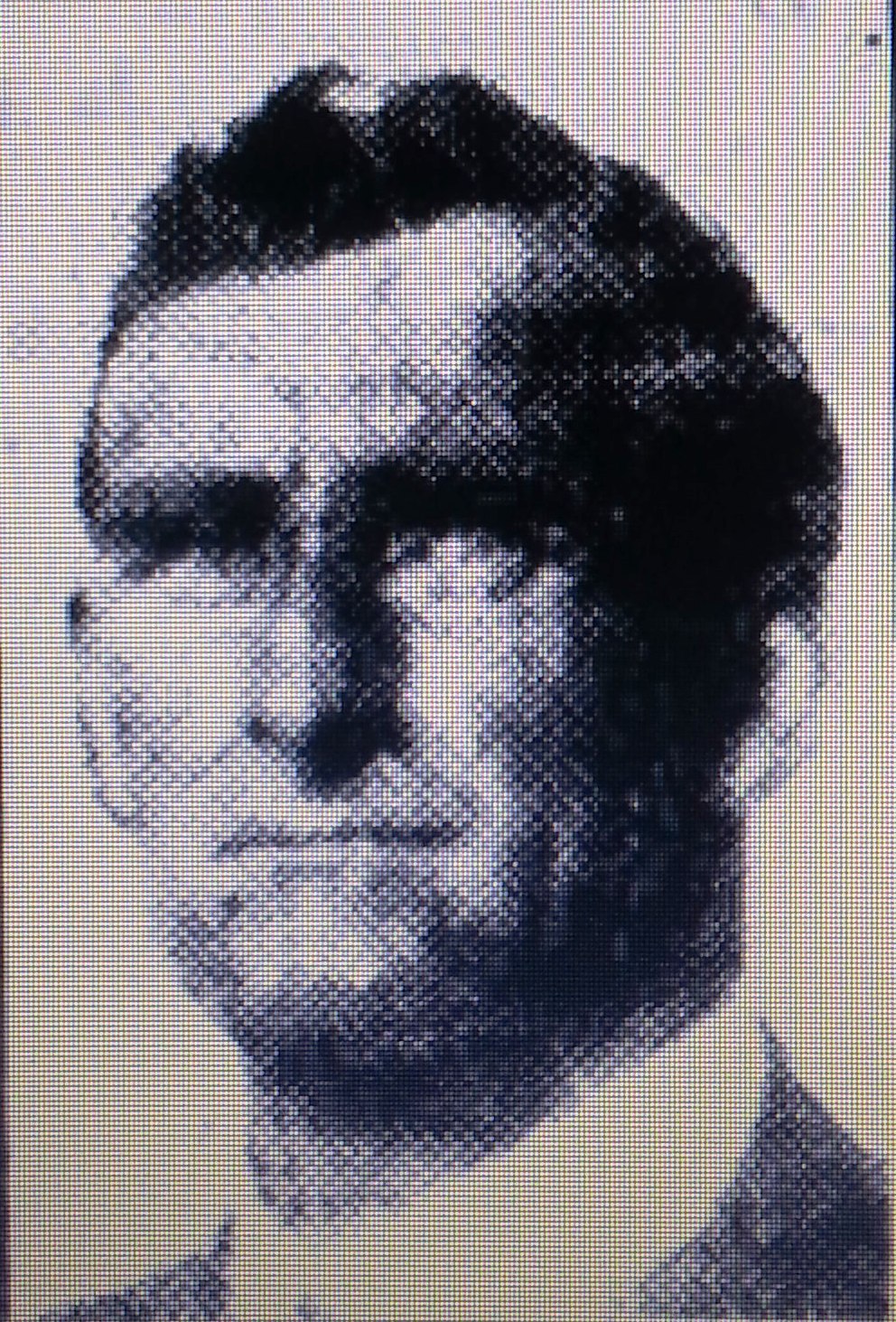
Driver 160 Percy Thompson was on board the “Nizam” whilst the landings commenced and described what he experienced.
“Thousands of infantrymen landed about 4 o’clock on the open beach, leading off with bayonet charge under heavy shrapnel and machine gun fire, some never landed, killed or drowned before getting ashore. Captured a good slice of hill – warships pumping iron all day especially in the evening when they opened up extra heavy on the enemy’s left flank- literally blew the top of a big hill off and wrecked a little fort to the right on beach, they were shooting right over the Nizam.
We went in rather close to land pontoons and shells were chucked at us a treat, shrapnel landing on the boat. Engineers building wharf under fire reported 3,000 casualties till 2 o’clock. Indian Mountain Battery landed afternoon- watched them scrambling up the hill with mules- could not land artillery, reason so
much enemy’s shrapnel flying. Steam pinnaces towing big strings of boats full of wounded all day to hospital ship.” – Courtesy Scott Wilson
It was estimated that this handful of jetty/pontoon builders from the 1st FCE helped save the lives of 1500 fellow Anzacs and allied soldiers and were the rare few of the original engineers during the Gallipoli campaign who all received Complimentary Orders and a few men would later add “Mentioned in Despatches” and further distinctions to their names. William Davis (Cohen)was one who received a 153 Complimentary Order and was later also “Mentioned in Despatches”.
The original citation lists Bachtold, 10 sappers and 1 driver and reads as follows….
“On the 25th April this officer and his crew paddled barrel piers into the bay under a heavy shell fire and then deliberately set to work under a hail of bursting shrapnel and erected the landing stage. This section was of the greatest value in getting off the wounded and enable over 1500 men to be sent off the same day. The men had never before been under fire.”

On the 9th of May, only a few days after the jetty builders had completed their task, William was struck down with dysentery and spent his time in hospital at Anzac Cove. Many men would become serious casualties from dysentery, but William was robust and soon returned to his unit, living among the dugouts with his section mates and immediately starting work tunnelling with his fellow sappers.
There are only a few references to particular men in the 1st Field Co. unit diaries during the Gallipoli campaign, however, there is a rare moment when on June 14th, 1915, William Davis Cohen and fellow sapper 58 Percy Frederick Hirst are both mentioned as being actively involved in testing the firing line of the enemy whilst new saps and tunnels were being navigated, both of them going out nightly against constant enemy fire. A few days earlier Lieut. Richard Dyer their commanding officer, was deep underground preparing mines for an underground attack near enemy lines at what was known as the “German Officers Trench”.
Lieut. Dyer made his own mark on the landscape at Gallipoli after successfully blowing in Turkish tunnels and creating what later became officially known as Dyer’s crater. It is very likely that William and Percy were on hand during Lieut. Dyer’s dangerous stunt as it was believed that Percy Hirst had managed to secure plans of Turkish trenches for his commanding officer. 58 Percy Hirst later received a special mention in Divisional orders 161/881 for acts of gallantry or valuable services during the period May 6th to June 28th, 1915.
William was one of the few originals who managed to stay the entire time at Anzac Cove, and had it not been for being struck down with rheumatism, he may well have been one of the last ANZACS to leave. A large portion of the company had already left Gallipoli in October and about a third of the company remained at Gallipoli to help with the evacuation. William left Gallipoli on the 5th of December for the island of Mudros and was hospitalised at the 3rd Canadian General Hospital.
Following a quick recovery, he was in time to reunite with his company and the 1st FCE embarked on the HMT Caledonia on the 23rd of December and returned to Alexandria, and arrived at Tel -el- Kebir Egypt on the 28th December 1915 where the company remained until the 14thFebruary 1916.
Whilst William was camped at Tel-el-Kebir he received his ‘Mentioned in Despatches’ honour.
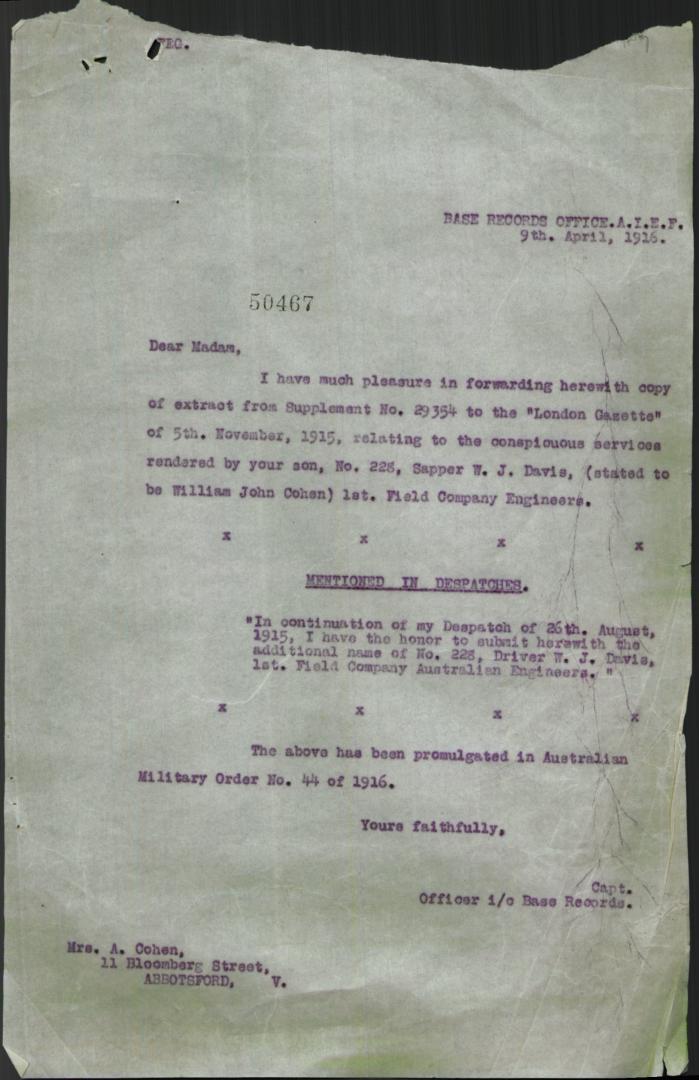
‘Mention in despatches’ is one of the oldest Imperial forms of recognition for bravery or distinguished service. A despatch was an official report, written by a senior commander in the field to pass on information about the progress of military operations. Commanders would often include in their despatches the names of those deserving attention to their services for a specific act of bravery or for a period of outstanding service. When a soldier’s name appeared on these despatches, they were published in The London Gazette, so a mention equated to a public commendation. Prior to 1919, those Mentioned in Despatches did not receive any form of recognition other than having their names published in The London Gazette. In 1919 a certificate was introduced to acknowledge those who received mention and the following year an emblem of bronze oak leaves was issued to individuals who had been Mentioned in Despatches between 4 August 1914 and 10 August 1920. The bronze emblem was to be worn at a low angle in the centre of the ribbon of the Victory Medal. Only one device was awarded per person, even if an individual was mentioned more than once.

Following an inspection by General Birdwood and the Prince of Wales on the 19th of March the 1st FCE made preparations for embarkation to France, and within a week left for Marseilles on the S.S Invernia. Having arrived at Marseilles on the 28th March the company made its way to the front line and by late April the men of the 1st FCE began their allotted tasks improving the front line conditions for the infantry.
The Battles of Pozieres
The village of Pozières is located in the Somme Valley, France. The main road running along the ridge, in the middle of what was the British sector of the Somme battlefields ran from the towns of Albert to Bapaume and close by stood the village of Pozieres, the highest point on the battlefield. On the 19th of July 1916 the men of the 1st FCE bivouacked just outside of Albert, approximately 3 miles from the front lines. On the 21st of July they marched into Albert and commenced helping to dig communication trenches that same night. The heavy bombardments from the Germans had already commenced and continued.
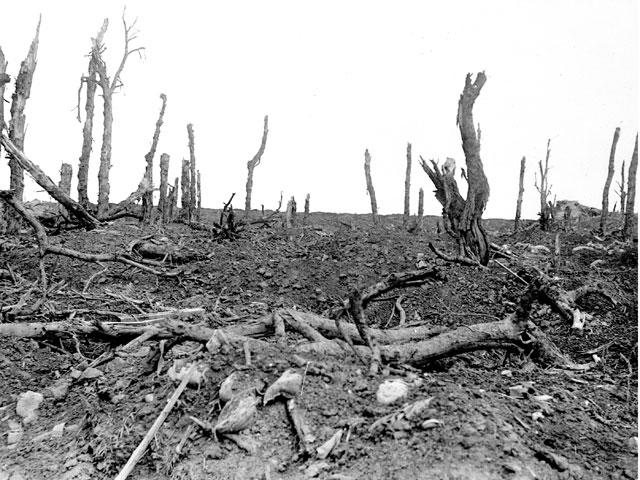
By Sunday the 23rd of July the 1st FCE moved in closer to the front lines at Pozieres and commenced construction of a strong point for a machine gun placement. 233 Cpl Thomas Arkinstall reported that the section was in front of Pozieres about 100 yards past the village and were digging an advanced machine gun position overlooking two roads leading to Pozieres and Bapaume. For four days, Pozieres would be pure hell for the men of the 1st Field Company Engineers.
It is likely William was still attached to No. 2 section of the 1st FCE with his good friend 56 Percy Hirst and still under command of the now Major Richard Dyer. Remarkably Major Dyer not quite 23 years old, was the commanding officer in charge of the 1st Field Company Engineers during the Battle of Pozieres.
The very able and hardened Gallipoli veteran, famous for his single-handed efforts at Gallipoli, was no stranger to putting himself at great risk. However as Major and commanding officer, he was now placing his men at great risk and his diary entries show his hesitance in despatching the sections whilst under extremely heavy bombardment from the Germans.
Link to the full 1st FCE Unit diary July 1916 –July 1916 RCDIG1008590-1
The drawings above from the unit diaries show the detailed plans for the construction of the “Strong Point” and machine gun placement.
Original sapper 29 Bob Lundy recorded in his diary on the 23rd July 1916 the casualties and the devastation of the day, noting that there were dead laying all along the track and every inch of ground was just shell holes.
Within the first four days of the operations, the return lists for the engineers were prepared by original Lieut. Robert Osborne Earle for Major Richard Dyer which outlined the devastation to the men of the 1st Field Company. The casualties list recorded the men who were either killed, wounded, missing, gassed or suffering shell shock, between the 22nd and 26th July 1916. William was lucky not to be on the casualty list however his good friend 56 Percy Frederick Hirst was not so lucky and was among those of the 1st FCE killed in action.
In September 1916 the 1st FCE was stationed at Ypres and relieved the Canadians on this sector. Major Richard Dyer reported that the “trenches were in a shocking condition, no work appears to have been done for some time, the mud in some places being two feet deep”
It wasn’t long before the men of the 1st FCE were busy revetting, duck-boarding and reclaiming many of the trenches despite continued poor weather and enemy bombardments.
The poor weather continued and on the 20th of September work was delayed by rain and enemy snipers who were particularly active, and like the old Gallipoli days, the men had to seek cover on many occasions. The following day the men pushed on determined to reclaim the trenches before the winter set in. On this day the 21st of September 1916 original sapper 164 James Page was fatally wounded by a sniper.
William remained on active service in the field up to 23rd December 1916 when he was hospitalised with influenza which took him some time to recover, and he later rejoined his unit back in the field on 2nd March 1917. On his return, he faced the news that only a week before eleven sappers and two officers were killed at Yarra Bank. It was recorded by the originals as “one of the most disastrous events which occurred to the company during the whole war”. William would have been shocked to discover that fellow sapper 124 Sidney Garrett an original Gallipoli pontoon builder, mentioned in despatches alongside him, was one of the casualties and died from his wounds on the 6th of March 1917.
The 1st FCE had now been relieved by the 3rd FCE and the unit slowly made their way to Bray and spent seven weeks of rest and recreation. Good weather prevailed, and the men played football, and there was plenty of swimming and cricket. It was reported that they had a couple of concerts and it was then they discovered they had “some really good singers”.
The company returned to the front lines in August and it wasn’t until late September that the unit encountered serious shelling during its operations which took the lives of two more originals. On the 20th of September at the Battle of Menin Road Ridge 43 Arthur Baldwin and 76 James Hamilton were both killed in action. A few weeks later, on the 4th of October at the Battle of Broodsiende, 32 James Nicholls, another original, was also killed and the company suffered many more casualties.
William remained with the company until the 15th of December 1917 when he finally had some long overdue leave. Taking his first and only official leave, William headed for the UK for just two weeks and then returned to the field in France but was detached from his unit and was stationed at Royal Engineering training school – 1st D E H Q in April 2018 and then detached to the 4th Army Infantry school in France.
His war record does not reveal exactly what William was doing during his time at Engineering Headquarters since his return from England, but after being on the front lines for so long over the years it must have been a welcomed change.
On the 13th of October 1918 as part of the 1914 draft of personnel, William was entitled to 6 months’ leave, known as the ‘D31 special leave 1914’. Men like William were acknowledged as ‘Nineteen fourteeners’ and were proud of their entitlement. William took his well-deserved 6 months leave for Australia, leaving France for England and then embarking to Australia on the ‘HMT Durham Castle’ on the 23rd of October 1918.

Onboard the ‘HMT Durham Castle’, William was joined by 19 fellow original members from the 1st FCE who were also included in the same draft. Whilst at sea the war officially ended and news that they were returning home for good, must have been music to their ears. William was lucky to share this great news with 229 George William Hutley, 49 John Atkins, 178 Walter Blattman, 193 Forde Leathley, 171 Keith Waterhouse, 148 Jas. Dickson (alias Jas. Dixson Spencer), 201 Herbert G. Eggleton, 92 William Fahey, C.Q.M.S. 168 John Flackfield (M.M.) 161 George C. Gear, 24 Stanley Hense, 158 CMS. James Johnston, 196 Spr. Fred T. Meads, 68 Jack L. McMahon, 247 Fred Pattenden, 37 Albert E. Shoosmith, 46 James Smith, 160 L/Cpl. Percy R. Thompson, 137 2nd Cpl. Geo. E. M.Woods.
With the war finally over William disembarked on Australian soil on the 3rd December 1918, and was later discharged on the 21st Feb 1919. William immediately returned to the family home at 62 Stafford St, Abbotsford Victoria, with his brothers, Abraham, Joseph, sister Ruby and his mother Amelia and shortly after started work as a storeman.
On the 26th of October 1920, William filed his statutory declaration confirming what the authorities already knew, his real name was William John Cohen.
In 1922 the family moved to 39 Ballarat St, Collingwood, and his brothers Abraham and Joseph, and sister Ruby were all working in the shoe trade, very likely the family business. However, William was no longer a storeman and had taken on a job as a gardener, perhaps still preferring to work outdoors.
In 1923 he married Emily Sabina Waldock and they stayed on in Collingwood never far from the family in Ballarat street. Later in the mid-1930’s William, Emily and their daughter Alice Irene Cohen moved to 180 Nicholson St Abbotsford where they remained for over 20 years where William continued to live a modest and perhaps inconspicuous life after the war.
His family remember William never talking about the war, only ever mentioning that he was on the first boats in and the last boats out of Gallipoli. His silence about his wartime life was quite common and understandable among the many men who witnessed the devastation of war first-hand like William. While William remained a modest man and may have preferred to live a quiet life, his story should never be understated. On the surface, William Cohen’s war record is like many other war records, a timeline showing far-off destinations dotted with dates and strange military abbreviations, only fragments of information and short on detail. But when the timetable and the record are investigated further, the incredible real-life story of William Cohen emerges.
William “Jack” Cohen was a remarkable man, one of the hardiest men of the 1st FCE, a robust individual who had a strong sense of duty and an enduring commitment to service. His service as an original ‘nineteen fourteener’, a hardened Gallipoli veteran, ‘Mentioned in Despatches’, and then actively participating in historically some of the worst battles of the Western Front makes William Cohen a rare individual among many brave men.
William “Jack” Cohen died in 1959 aged 68. His wife Emily died 10 years later, and both are still together sharing side by side niches in the Garden of Remembrance at Fawkner Memorial Park, Moreland City Victoria.
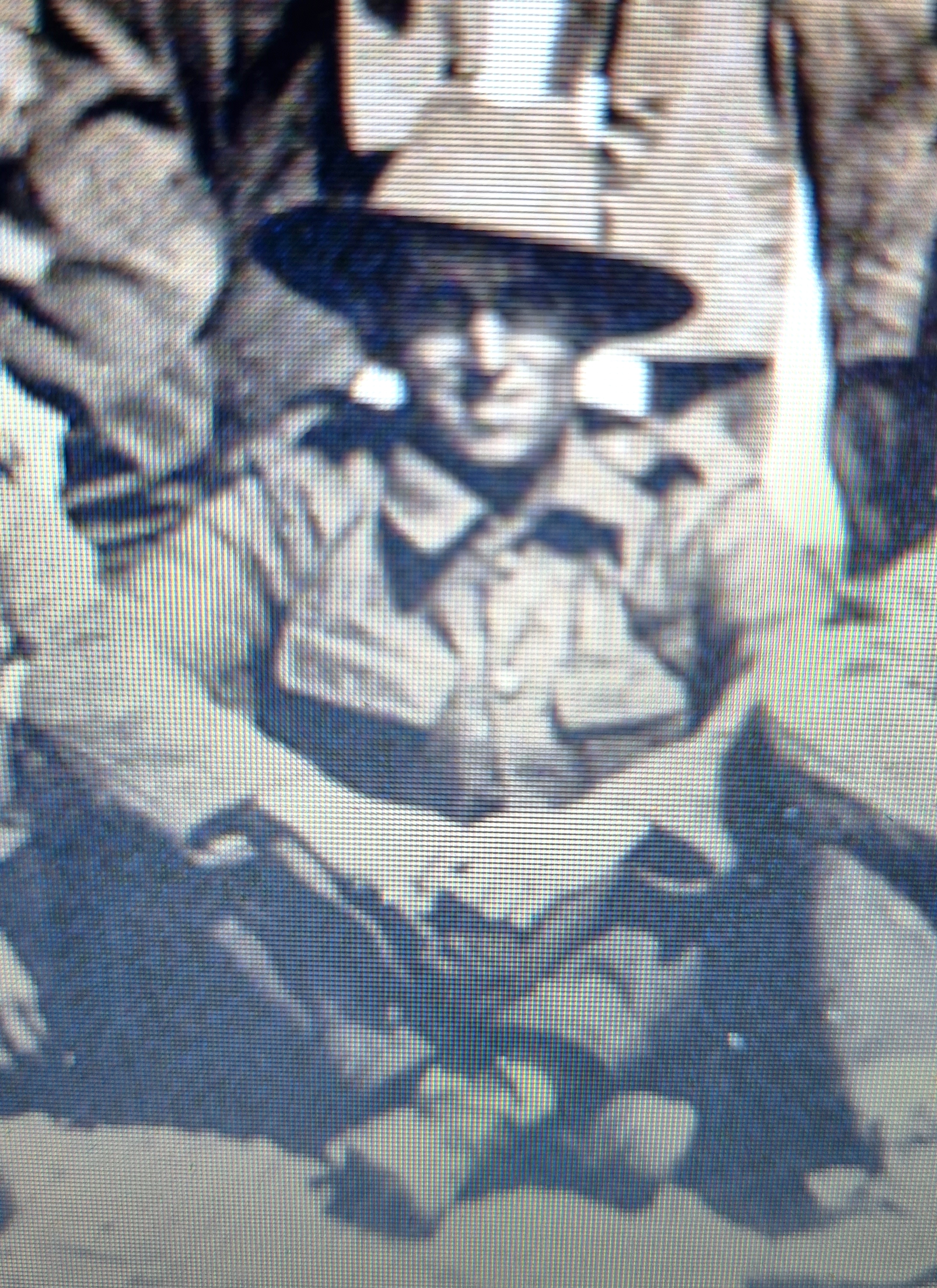
Story :- ©Vance Kelly2022
Sources:
AWM, NAA, NLA
Mitchell Library NSW
Images from the John Hoey Moore Collection
Photos from the Lundy Family Collection –
Acknowledgments:
Liz Lowe – for sharing her family photos from her private collection.
Footnote: I was fortunate enough to have Liz Lowe whose husband is the great-nephew of William Cohen reach out after identifying William in a group photo. A rare sighting and one that has brought more meaning to the life of William Cohen and the history of the men of the 1st FCE. Thank you Liz.










